Americans can make about 11 gigawatts of solar panels per year, up from 6.4 gigawatts in 2022. In comparison, one Chinese company alone – JinkoSolar – is able to produce 56 gigawatts at its solar panel factory in Shanxi province. China as a whole can make more than 400 gigawatts of new panels every year – accounting for more than 80% of global production capacity.
After investing over US$130 billion into the solar industry in 2023, China is dominating and monopolizing the world’s solar manufacturing sector. This year alone, an analysis by energy research firm Wood Mackenzie says China would bring more than a “terawatt” of solar wafer, cell and panel capacity online – enough to meet annual global demand through 2032.
However, only half of those solar panels are for domestic consumption. The surplus is exported, to the tune of US$43 billion a year. Until a decade ago, Germany was the world’s largest producer of solar panels. Today, German manufacturers are struggling despite skyrocketing demand as Germany and the rest of Europe try to cut greenhouse gas emissions, thanks to Chinese companies undercutting everyone on price.
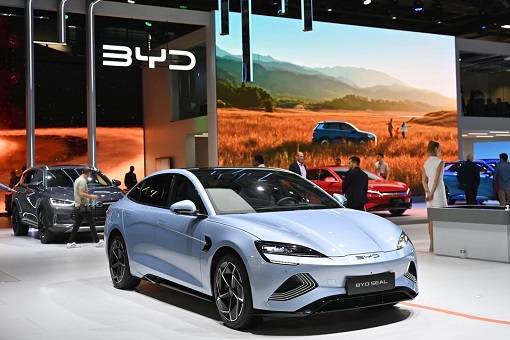
Likewise, the emergence of China’s BYD as the world’s largest seller of electric cars since late last year has seen the Chinese leadership in yet another clean-energy sector. Elon Musk, who burst into laughter during a 2011 interview when he was asked about BYD as a potential rival for Tesla, has warned this year that Chinese automakers will “demolish” global rivals without trade barriers.
Worse, in addition to more than 80% of the global solar cell exports, China now controls more than 50% the global sales of the lithium-ion battery packs used for electric vehicles, not to mention more than 20% of electric vehicles (EV). The “new three” – solar cells, lithium-ion batteries and electric vehicles – has become a buzzword in China as officials celebrate the country’s new exports.
But the U.S. isn’t impressed. Treasury Secretary Janet Yellen’s four day visit to China, which ended on Monday (April 8), was supposed to beg Beijing to cut its industrial “overcapacity”. She complained that excess production of goods that undercuts global competitors on price has become a problem as the global market is flooded with artificially cheap Chinese products.
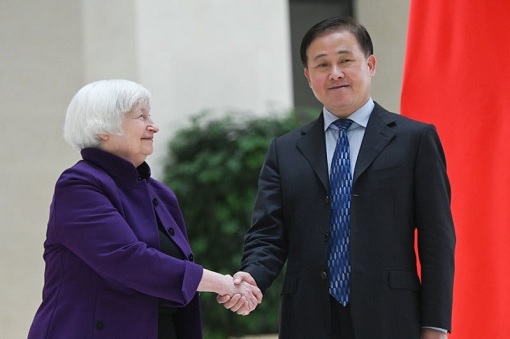
However, the fact that President Joe Biden sent Yellen to China for her second trip in just 9 months as treasury chief was already a red flag that Washington was extremely worried about the damage of China’s exports has done to the United States. The world’s largest factory is threatening American jobs and businesses. That was the major focus of Yellen’s trip.
But why should China slash its production output to fix the U.S.’ problem? Dismissing Western complaints, deputy finance minister Liao Min lectured Yellen that imbalances between supply and demand can occur in any economy and have even happened many times in Western countries. Beijing said the complaint was nothing but a pretext to suppress China’s rise.
Meanwhile, China’s commerce minister, Wang Wentao, has rubbished the U.S. and E.U.’s suggestions that Chinese EV companies depend on government subsidies, arguing that they rely on continuous technological innovation, strong supply-chain system, and market competition instead. And it was because China capitalizes on clean-energy sector as a new driver of economic growth that saw its sudden dominance in green energy.
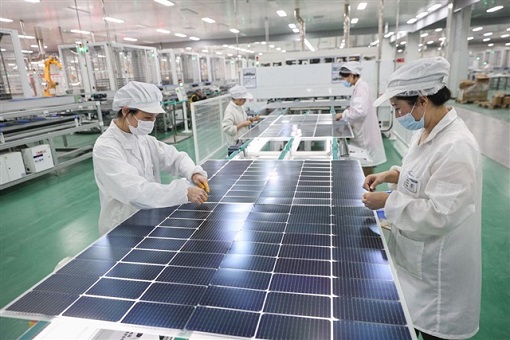
Like Huawei, the U.S. and its allies are now trying to stop China just because the West is lagging behind – unable to compete with the Chinese to innovate and produce at lower cost. Gone were the days when the nation was depending on “old three” that was once the pillars of its exports – clothing, home appliances and furniture. China today has gone high tech.
The latest statistics from the Chinese Ministry of Industry and Information Technology (MIIT) show China’s total national output for polysilicon, silicon wafers, cells and modules in 2023 increased by over 21%. Compared to over 1.4 trillion Yuan (US$195 billion) in 2022, the output exceeded 1.7 trillion Yuan (US$236 billion) in 2023. This is why the U.S. wanted to control China.
Not only Beijing ignores Washington’s appeal to cut the so-called overcapacity, China said its industrial drive can benefit overseas markets, therefore, the Chinese Ministry of Industry and Information Technology would instead increase efforts to encourage the country’s EV companies to expand overseas – especially in developing countries.
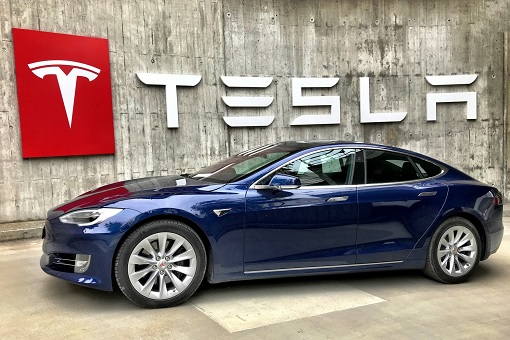
In truth, Western complaints about Chinese industrial overcapacity as well as subsidy are both laughable and hypocritical. In the U.S., average direct subsidies from federal and state governments amount to almost US$9,000 per vehicle over 10 years while direct subsidies from utilities push the amount over US$10,000. Tesla itself received a US$465 million loan guarantee through the American Recovery and Reinvestment Act.
In the 2010s, in order to boost production, European countries – especially Germany and Spain – had been heavily subsidising the use of solar energy. However, thanks to the 2008 Financial Crisis as a result of American subprime mortgage, the European countries lifted solar energy subsidies. It was around this time that China saw the opportunity and started to push for the new-energy industry.
But when China succeeded where both the U.S. and E.U. failed, the Biden administration said it would investigate foreign car technologies, especially from China under the false pretext of national security risks (just like how Trump tried to cripple – and failed – on tech giant Huawei), while the European Union is busy conducting an anti-subsidy probe into Chinese electric vehicles.
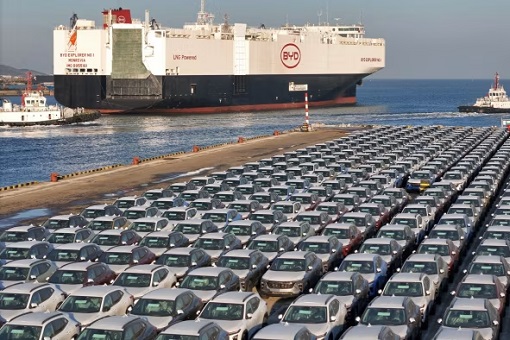
Ironically, it was the West who had previously condemned China as the world’s biggest environmental polluter. However, when the country took action and aggressively reduces emissions to save the planet, so much so it has become the world leader in renewable energy, the same Western nations are crying, whining and bitching about Chinese-made electric cars, unfair trade practices, overcapacity and whatnot.
Unlike Huawei, which has been hit hard – temporarily – by U.S. restrictions on semiconductor exports to China, there’s nothing America can do to stop the Chinese renewable energy. Sure, the U.S. can bully China with yet another tariffs on Chinese green energy products. But if they can’t even kill Huawei despite throwing everything, including the kitchen sink, chances are they can’t stop Chinese cheap goods.
The best part is while Yellen was tasked to beg Beijing to cut its overcapacity, at the same time, she has threatened China not to support Russia. The U.S. Treasury Secretary warned that Chinese companies could face “significant consequences” if they provide material support for Russia’s war on Ukraine. It’s childish that the U.S. thinks China needs its permission to make friends.
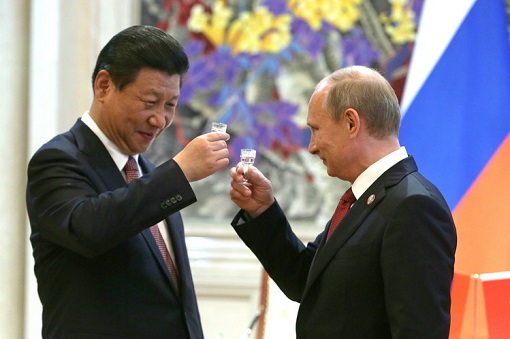
Janet Yellen can visit China twice a month if she likes. But the world’s second largest economy won’t kowtow to the U.S. for bullying its way to maintain its hegemony. Who is the U.S. to lecture China what to export and how much to produce? Just because American workers and businesses are being hurt does not mean the Chinese must stop its production capacity.
Other Articles That May Interest You …
- Tesla Disaster – Owners Stranded As “Dead Robots” Won’t Charge In Freezing Temperature, But China Has The Solution
- BYD Beats Tesla Again – How The U.S. Carmaker Lost Its Crown As World’s Top Electric Vehicles Manufacturer
- Sodium-Ion Battery – How China Supercharge Rechargeable Batteries To Dominate The Next Big Technology
- Electric Car As Cheap As $11,000 – How China Beats The U.S. In Electric Vehicles & Leaves Global Brands In The Dust
- Volvo Will Sell Only Electric Cars By 2030 – And You Can Only Buy It Online
- Learn From China – Mahathir Has To Dismantle Discrimination & Racist Economic Policy First
- If Proton Has The Quality Of Volkswagen Or Toyota, People Will Not Dump The National Cars
- Third National Car, The Unfinished Business – Why Mahathir Should Wake Up & Stop Hallucinating
- China Geely Introduces Meritocracy – But Handicapped Proton “Bumiputeras” Aren’t Happy
- 80% Cheaper To Take Robo-Taxi – The Next Car You Buy Could Be Your Last
- Delivering 310 Miles (499-KM) – Tesla Model 3 Could Be As Successful As iPhone

|
|
April 11th, 2024 by financetwitter
|


|

|

|

|

|

|




























Comments
Add your comment now.
Leave a Reply